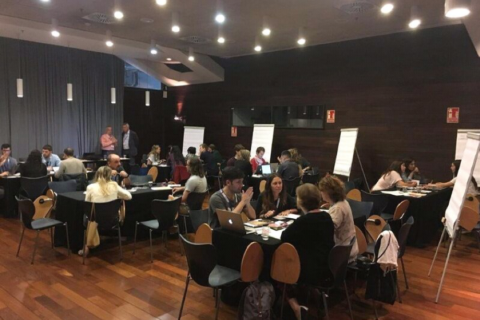By Crawford Hollingworth and Liz Barker
DEFINITION: Heuristics are shortcuts or rules of thumb for decision-making to aid us in finding a quick, ‘good-enough’, answer to a complex question or problem.
Heuristics make our lives simpler and easier to navigate, saving us time, effort and energy. People frequently use heuristics so that they don’t have to go through the mental effort of carefully applying the detailed, ‘full-works’ solution. Often in these situations a simpler solution will do just fine, challenging the idea that ‘more information is always better’. Understood from an evolutionary perspective, this makes sense. Thinking is metabolically costly and time-consuming, and so cheap ‘good-enough’ solutions can be useful. Sometimes heuristics can be optimal, sometimes they can be less so and error prone.
We use several types of heuristics in our life, and researchers have identified over 40 simple rules of thumb. Some of these include: making decisions based on brand name only, what is endorsed by others, what you recognise, what you instinctively like or that creates a ‘warm glow’, or what is most scarce. Here are a few simple examples:
- Recognition heuristic: you choose the brand of fizzy drink you recognise when in a foreign country on holiday
- Gaze heuristic: to catch a ball, we don’t calculate trajectories and velocities in our heads as we run, but simply lock eyes on it and adjust our running speed so that the angle between the eye and the ball stays the same
- Take the best heuristic: when judgments are based on a single “good” reason only, ignoring other cues. For example, we might rely on the rule of thumb ‘eat ‘five a day’ of fruit and veg’ to have a healthy diet. Another example is when buying food in the supermarket, we might choose the ‘Taste the Difference’ label, as a shortcut for quality
- Price heuristic: Price becomes a heuristic for quality. People often assume that more expensive = better quality
- Equity heuristic: We’ve all divided a cake equally among 8 people, using the ‘1/n rule’ to give everyone an equal 1/8th slice rather than asking each person how much they want, which would be far too time-consuming.
You might spot some common themes in the examples above which give some clues as to how heuristics reduce effort. In fact, Anuj Shah and Danny Oppenheimer delved into this and believe that all heuristics aim to reduce cognitive effort by using the following principles:
- Examining fewer pieces of information
- Relying on easy-to-access pieces of information
- Simplifying the weighting of information
- Integrating less information into the decision process
- Considering fewer alternatives overall
The heuristics we use consist of some or all these effort-reduction principles, even if we are not consciously aware of having adopted them.
Heuristics Can be Optimal
Looking at the examples listed above, you’ll notice that some are extremely effective, whilst others might lead to a poor choice. It is often assumed that heuristics can sometimes result in irrational, sub-optimal decision-making and can produce ‘second-best results’. However, some researchers, notably the psychologist Gerd Gigerenzer, emphasise that heuristics can be the most optimal way to respond, especially in occasions where we lack information or time.
For example, Gigerenzer’s research found that a stock portfolio consisting of companies whose names were familiar to the ordinary person on the street outperformed many other portfolios constructed by financial experts using more complex reasoning.
Gigerenzer argues that heuristics should be seen as adaptive responses to uncertainty, rather than viewing people as riddled with irrational cognitive biases.
Indeed, companies and organisations often develop simple rules of thumb to help guide our choices and enable us to make better decisions. For example, pension providers advise we need roughly two-thirds of the income we currently earn in retirement. So if you currently earn £50k per annum, you need £30k per annum in retirement. We’re also advised to set aside at least 3 months’ income (ideally 6 months) for emergency savings.
Every three weeks The Behavioural Architects will put another cognitive bias or behavioural science concept under the spotlight. The next concept under the spotlight will be Optimism Bias
By Crawford Hollingworth and Liz Barker, The Behavioural Architects
Crawford Hollingworth is co-Founder of The Behavioural Architects – an award-winning global insight, research and consultancy business with behavioural science at its core, which he launched in 2011 with co-Founders Sian Davies and Sarah Davies.
Liz Barker is Global Head of BE Intelligence & Networks at The Behavioural Architects.


